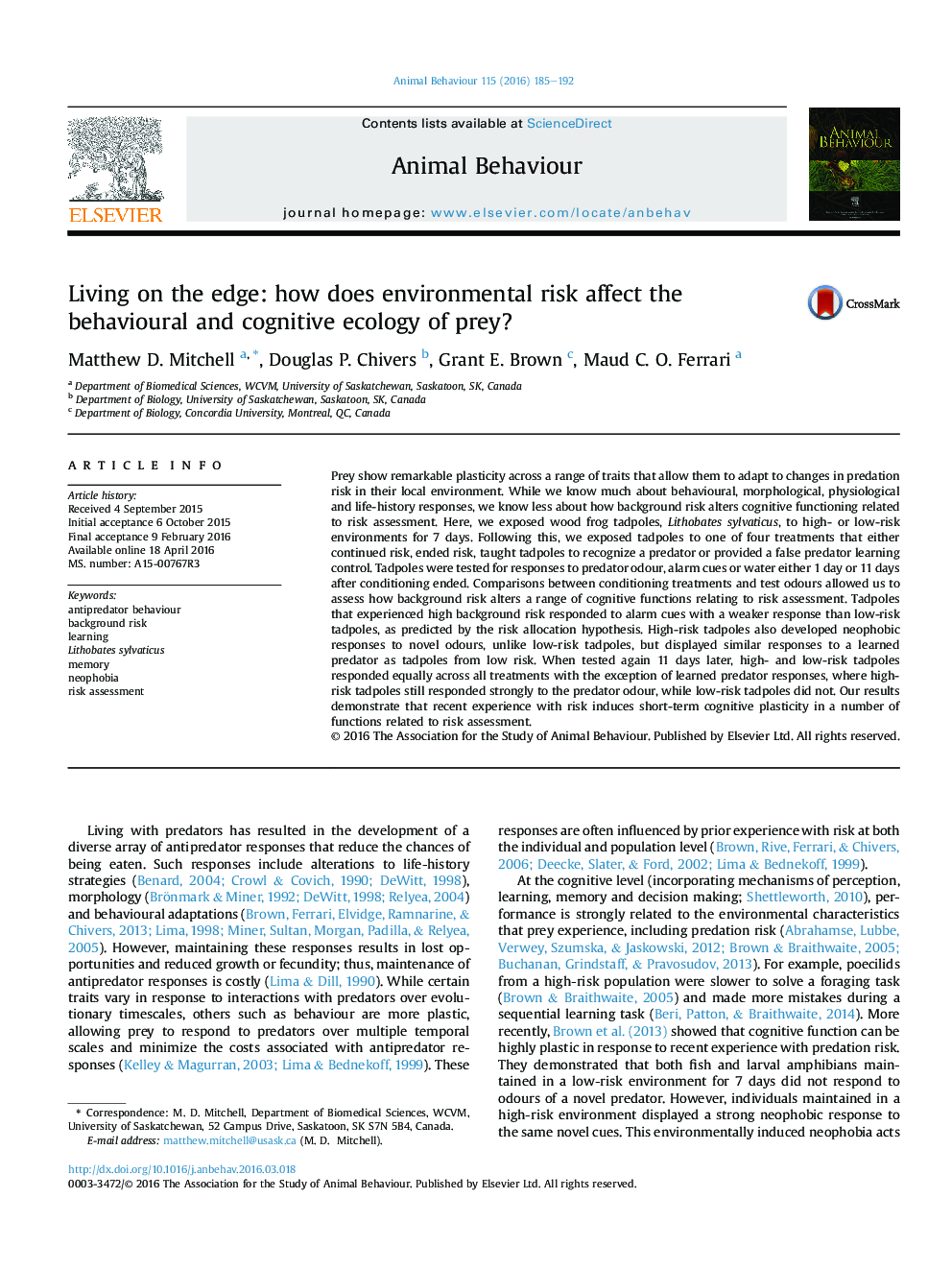| Article ID | Journal | Published Year | Pages | File Type |
|---|---|---|---|---|
| 8489120 | Animal Behaviour | 2016 | 8 Pages |
Abstract
Prey show remarkable plasticity across a range of traits that allow them to adapt to changes in predation risk in their local environment. While we know much about behavioural, morphological, physiological and life-history responses, we know less about how background risk alters cognitive functioning related to risk assessment. Here, we exposed wood frog tadpoles, Lithobates sylvaticus, to high- or low-risk environments for 7 days. Following this, we exposed tadpoles to one of four treatments that either continued risk, ended risk, taught tadpoles to recognize a predator or provided a false predator learning control. Tadpoles were tested for responses to predator odour, alarm cues or water either 1 day or 11 days after conditioning ended. Comparisons between conditioning treatments and test odours allowed us to assess how background risk alters a range of cognitive functions relating to risk assessment. Tadpoles that experienced high background risk responded to alarm cues with a weaker response than low-risk tadpoles, as predicted by the risk allocation hypothesis. High-risk tadpoles also developed neophobic responses to novel odours, unlike low-risk tadpoles, but displayed similar responses to a learned predator as tadpoles from low risk. When tested again 11 days later, high- and low-risk tadpoles responded equally across all treatments with the exception of learned predator responses, where high-risk tadpoles still responded strongly to the predator odour, while low-risk tadpoles did not. Our results demonstrate that recent experience with risk induces short-term cognitive plasticity in a number of functions related to risk assessment.
Keywords
Related Topics
Life Sciences
Agricultural and Biological Sciences
Animal Science and Zoology
Authors
Matthew D. Mitchell, Douglas P. Chivers, Grant E. Brown, Maud C.O. Ferrari,
